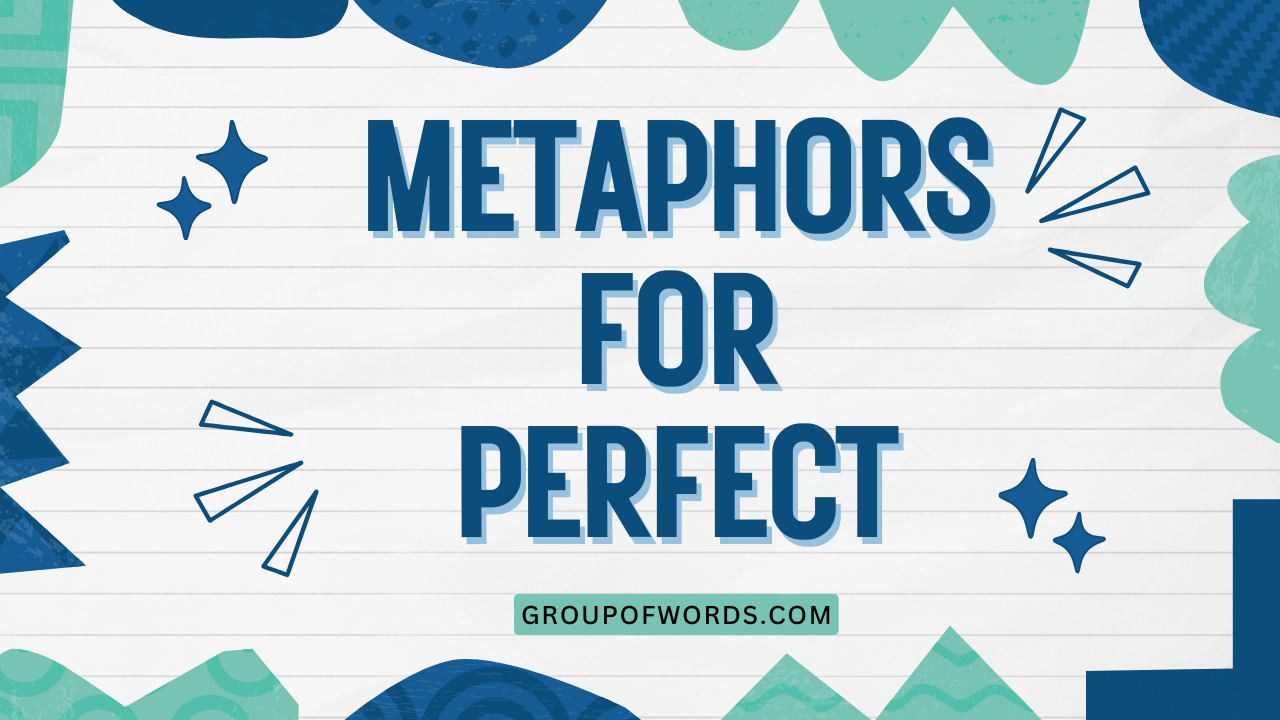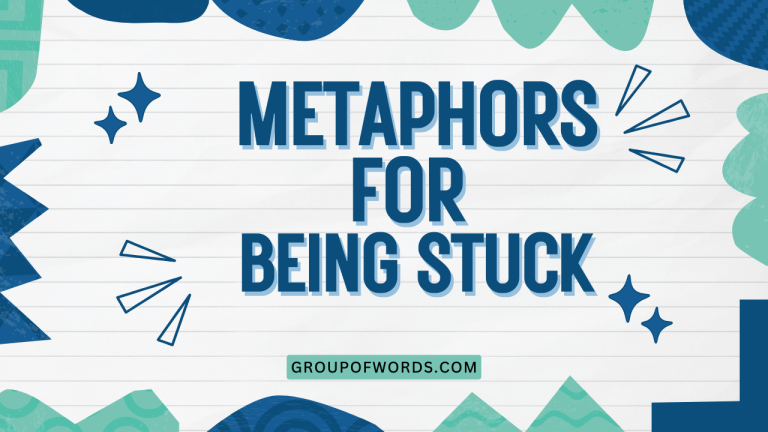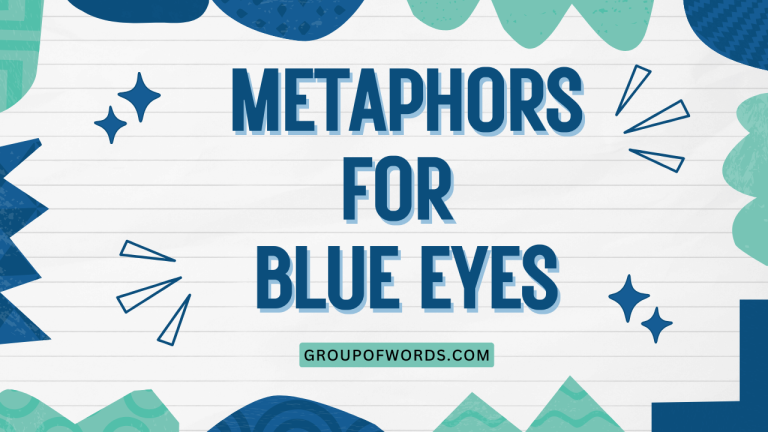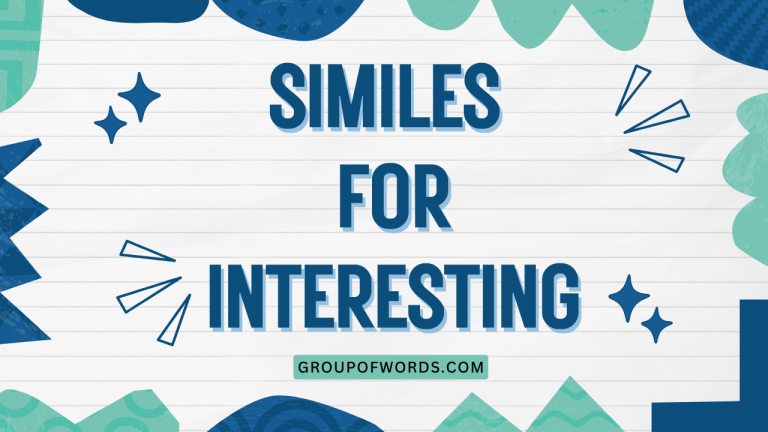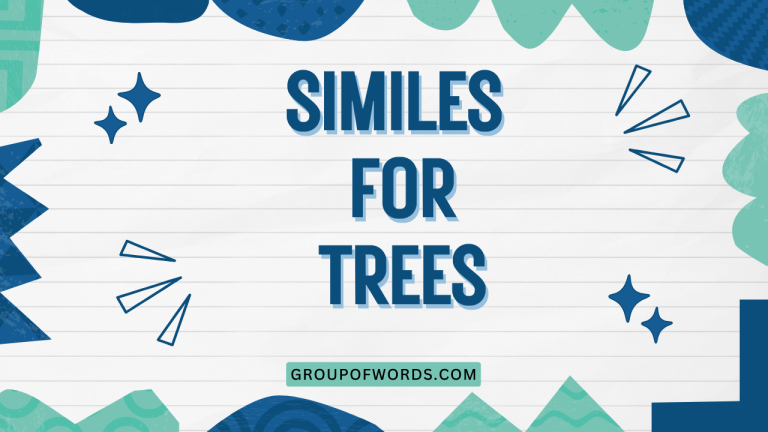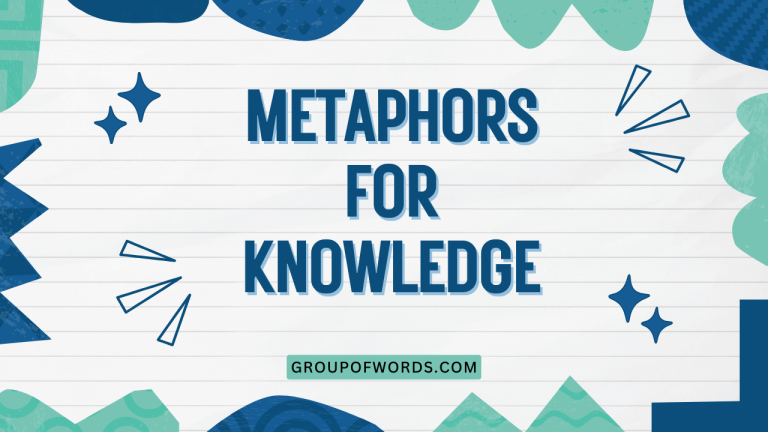Metaphors for Perfection: A Comprehensive Guide
Understanding how we use metaphors to describe perfection is crucial for mastering nuanced English. Metaphors allow us to express abstract concepts like ‘perfection’ in vivid and relatable terms.
This article explores various metaphors for perfection, their structural elements, usage rules, and common mistakes. Whether you’re an English language learner or a native speaker aiming to refine your communication skills, this guide will enhance your ability to appreciate and employ these figures of speech effectively.
Table of Contents
- Introduction
- Definition of Metaphor for Perfection
- Structural Breakdown
- Types and Categories
- Examples
- Usage Rules
- Common Mistakes
- Practice Exercises
- Advanced Topics
- FAQ
- Conclusion
Definition of Metaphor for Perfection
A metaphor for perfection is a figure of speech that uses an image, idea, or concept to represent the state of being perfect. It doesn’t literally mean what it says but instead suggests a similarity or analogy to convey the idea of flawlessness, completeness, or ideal quality.
These metaphors help us grasp the abstract notion of perfection by relating it to something tangible or understandable.
The function of a metaphor for perfection is to add color, depth, and emotional resonance to language. Instead of simply stating that something is perfect, a metaphor allows us to evoke a feeling or create a vivid mental picture.
This makes our communication more engaging and memorable.
Metaphors for perfection can be found in various contexts, including literature, poetry, everyday conversations, and marketing materials. They are used to describe everything from the beauty of nature to the quality of a product to the skill of an artist.
The choice of metaphor often depends on the specific context and the desired effect.
Structural Breakdown
A typical metaphor for perfection consists of two main elements: the tenor and the vehicle. The tenor is the subject being described (i.e., the thing that is perfect), and the vehicle is the image or concept used to represent it. The connection between the tenor and the vehicle is what creates the metaphorical meaning.
For example, in the metaphor “a flawless diamond,” the tenor is the object being described (let’s say, a performance), and the vehicle is the “flawless diamond.” The shared characteristic of being without imperfections links the two. The effectiveness of a metaphor depends on how well the vehicle captures the essence of the tenor.
The underlying structure often involves an implied comparison. Instead of saying “This performance is like a flawless diamond,” the metaphor directly states “This performance [was] a flawless diamond.” This direct substitution creates a more powerful and concise image.
Types and Categories
Metaphors for perfection can be categorized based on the sensory experience they evoke or the type of concept they employ. Each category offers a unique way of understanding and expressing the idea of perfection.
Visual Metaphors
Visual metaphors use imagery that appeals to our sense of sight. They often involve colors, shapes, and light to convey the idea of perfection.
These metaphors create a strong and immediate impression on the reader or listener.
Examples include: “a seamless canvas,” “a crystal-clear lake,” “a radiant sunrise,” and “a perfectly aligned mosaic.” These images evoke a sense of visual harmony and flawlessness.
Auditory Metaphors
Auditory metaphors use sounds and music to represent perfection. They often involve harmony, clarity, and resonance to convey the idea of ideal quality.
These metaphors can be particularly effective in describing performances or artistic creations.
Examples include: “a symphony of flavors,” “a perfectly tuned instrument,” “a crystal-clear note,” and “a harmonious chord.” These sounds evoke a sense of balance and purity.
Tactile Metaphors
Tactile metaphors use textures and physical sensations to represent perfection. They often involve smoothness, softness, and precision to convey the idea of flawlessness.
These metaphors can be particularly effective in describing physical objects or experiences.
Examples include: “a velvet touch,” “a seamless weld,” “a perfectly smooth surface,” and “a flawless finish.” These sensations evoke a sense of comfort and precision.
Taste Metaphors
Taste metaphors use flavors and culinary experiences to represent perfection. They often involve balance, richness, and purity to convey the idea of ideal quality.
These metaphors can be particularly effective in describing food, drinks, or sensory experiences.
Examples include: “a symphony of flavors,” “a perfectly balanced blend,” “a taste of heaven,” and “a divine delicacy.” These tastes evoke a sense of pleasure and satisfaction.
Abstract Metaphors
Abstract metaphors use conceptual ideas and philosophical notions to represent perfection. They often involve concepts like balance, harmony, and truth to convey the idea of ideal quality.
These metaphors can be particularly effective in describing abstract concepts or moral virtues.
Examples include: “the epitome of grace,” “the embodiment of virtue,” “a perfect balance,” and “the zenith of achievement.” These concepts evoke a sense of admiration and respect.
Examples
The following tables provide various examples of metaphors for perfection categorized by their type. Each table includes 20-30 examples to illustrate the breadth and depth of this figure of speech.
The table below showcases visual metaphors for perfection. These metaphors leverage imagery related to sight to convey the idea of flawlessness and ideal quality.
| Category | Metaphor | Explanation |
|---|---|---|
| Visual | A flawless diamond | Represents something without any imperfections, like a perfectly executed plan. |
| Visual | A seamless canvas | Describes something perfectly integrated and without any visible flaws. |
| Visual | A crystal-clear lake | Indicates clarity and purity, like a perfectly transparent argument. |
| Visual | A radiant sunrise | Suggests a new beginning that is beautiful and without any flaws. |
| Visual | A perfectly aligned mosaic | Represents harmony and precision in every detail. |
| Visual | A mirror image | Suggests perfect replication and accuracy. |
| Visual | A polished gem | Indicates refinement and the removal of all imperfections. |
| Visual | A pristine landscape | Represents unspoiled beauty and untouched perfection. |
| Visual | A spotless record | Indicates a history without any mistakes or blemishes. |
| Visual | A symmetrical design | Suggests balance and harmony in its visual structure. |
| Visual | A gleaming surface | Represents cleanliness and flawlessness. |
| Visual | An unblemished complexion | Indicates purity and flawlessness in appearance. |
| Visual | A vibrant rainbow | Suggests a perfect blend of colors and beauty. |
| Visual | A well-composed photograph | Represents artistic perfection in capturing a moment. |
| Visual | A sharply focused image | Indicates clarity and precision in detail. |
| Visual | A starlit sky | Suggests vastness and untouchable beauty. |
| Visual | A tailor-made suit | Represents custom-made perfection to fit exact specifications. |
| Visual | A flawless pearl | Indicates natural beauty and purity. |
| Visual | A golden ratio | Represents mathematical perfection in design and proportion. |
| Visual | A picture-perfect scene | Suggests a scene that is aesthetically flawless. |
| Visual | An immaculate garden | Represents well-maintained and flawless beauty. |
| Visual | A snow-white dove | Indicates purity and peace. |
| Visual | A sunset masterpiece | Suggests natural beauty at its finest. |
| Visual | A perfectly framed shot | Represents ideal composition and focus. |
The table below showcases auditory metaphors for perfection. These metaphors leverage sounds and music to convey the idea of ideal quality and harmony.
| Category | Metaphor | Explanation |
|---|---|---|
| Auditory | A symphony of flavors | Describes a perfect combination of tastes that create a harmonious experience. |
| Auditory | A perfectly tuned instrument | Represents something that is precisely calibrated and performs flawlessly. |
| Auditory | A crystal-clear note | Indicates purity and clarity in sound. |
| Auditory | A harmonious chord | Suggests a perfect blend of sounds that create a pleasing effect. |
| Auditory | A flawless melody | Represents a perfect sequence of notes without any errors. |
| Auditory | A resonant voice | Indicates a strong and clear sound, full of depth. |
| Auditory | A perfectly timed beat | Suggests precision and accuracy in rhythm. |
| Auditory | A flawless aria | Represents a perfect vocal performance. |
| Auditory | A seamless transition | Indicates a smooth and effortless change in music. |
| Auditory | A well-balanced mix | Suggests a perfect blend of different sounds. |
| Auditory | A clear cadence | Represents a perfect ending to a musical phrase. |
| Auditory | A pure tone | Indicates a sound without any distortion. |
| Auditory | A synchronized choir | Suggests perfect harmony and timing among multiple voices. |
| Auditory | A flawless recording | Represents a perfect audio capture without any errors. |
| Auditory | A melodic waterfall | Suggests a natural and harmonious sound. |
| Auditory | A perfectly pitched note | Represents accuracy and precision in sound. |
| Auditory | A rhythmic heartbeat | Indicates a steady and consistent rhythm. |
| Auditory | A silent whisper | Suggests a delicate and perfect sound. |
| Auditory | A tuned engine | Represents mechanical perfection in sound. |
| Auditory | A well-orchestrated plan | Suggests perfect coordination and timing. |
| Auditory | A clear signal | Represents unambiguous and perfect communication. |
| Auditory | A flawless speech | Indicates perfect delivery and content. |
| Auditory | A musical masterpiece | Suggests unparalleled auditory perfection. |
The table below showcases tactile metaphors for perfection. These metaphors leverage textures and physical sensations to convey the idea of flawlessness and precision.
| Category | Metaphor | Explanation |
|---|---|---|
| Tactile | A velvet touch | Describes something that feels smooth and luxurious. |
| Tactile | A seamless weld | Represents a perfect connection without any visible flaws. |
| Tactile | A perfectly smooth surface | Indicates a texture without any bumps or imperfections. |
| Tactile | A flawless finish | Suggests a perfect final layer without any defects. |
| Tactile | A silken thread | Represents a delicate and smooth texture. |
| Tactile | A polished stone | Indicates refinement and smoothness. |
| Tactile | A perfectly molded shape | Suggests precision and accuracy in form. |
| Tactile | A soft caress | Represents a gentle and perfect touch. |
| Tactile | A firm grip | Indicates strength and control. |
| Tactile | A well-crafted sculpture | Suggests artistic perfection in form and texture. |
| Tactile | A smooth transition | Represents an easy and flawless change. |
| Tactile | A fine fabric | Indicates high quality and perfect texture. |
| Tactile | A gentle breeze | Suggests a soft and pleasant sensation. |
| Tactile | A perfectly fitted glove | Represents custom-made perfection. |
| Tactile | A warm embrace | Indicates comfort and affection. |
| Tactile | A flawless complexion | Represents perfect skin texture. |
| Tactile | A well-oiled machine | Suggests smooth and efficient operation. |
| Tactile | A precise incision | Represents accuracy and skill in cutting. |
| Tactile | A gentle pressure | Indicates a perfect balance of force. |
| Tactile | A perfect handshake | Suggests confidence and sincerity. |
| Tactile | A smooth ride | Represents a comfortable and flawless journey. |
| Tactile | A soft landing | Indicates a gentle and perfect arrival. |
| Tactile | A well-kneaded dough | Suggests perfect texture for baking. |
The table below showcases taste metaphors for perfection. These metaphors leverage flavors and culinary experiences to convey the idea of ideal quality and satisfaction.
| Category | Metaphor | Explanation |
|---|---|---|
| Taste | A taste of heaven | Describes a flavor that is exceptionally delicious and satisfying. |
| Taste | A perfectly balanced blend | Represents a harmonious combination of flavors. |
| Taste | A divine delicacy | Indicates a food that is exquisitely prepared and tastes perfect. |
| Taste | A mouthwatering aroma | Suggests a smell that is incredibly appealing and promises great taste. |
| Taste | A rich flavor | Represents a deep and satisfying taste experience. |
| Taste | A sweet symphony | Indicates a perfect combination of sweet flavors. |
| Taste | A savory delight | Suggests a perfectly balanced and delicious savory dish. |
| Taste | A refreshing zest | Represents a vibrant and invigorating flavor. |
| Taste | A creamy texture | Indicates a smooth and luxurious mouthfeel. |
| Taste | A perfect seasoning | Suggests a balanced and harmonious blend of spices. |
| Taste | A subtle hint | Represents a delicate and understated flavor. |
| Taste | A robust taste | Indicates a strong and full-bodied flavor. |
| Taste | A smooth finish | Suggests a pleasant and lingering aftertaste. |
| Taste | A tantalizing treat | Represents a food that is incredibly tempting and delicious. |
| Taste | A unique flavor | Indicates a taste that is distinct and memorable. |
| Taste | A delicate balance | Suggests a harmonious combination of different tastes. |
| Taste | A clean palate | Represents a refreshing and pure taste experience. |
| Taste | A burst of flavor | Indicates an intense and immediate taste sensation. |
| Taste | A well-aged wine | Suggests a flavor that has been perfected over time. |
| Taste | A melt-in-your-mouth texture | Represents a smooth and delightful mouthfeel. |
| Taste | A comforting flavor | Indicates a taste that evokes feelings of warmth and satisfaction. |
| Taste | A flawless recipe | Suggests a perfect combination of ingredients and cooking techniques. |
| Taste | An exquisite dish | Represents a food that is exceptionally well-prepared and tastes perfect. |
The table below showcases abstract metaphors for perfection. These metaphors leverage conceptual ideas and philosophical notions to convey the idea of ideal quality and virtue.
| Category | Metaphor | Explanation |
|---|---|---|
| Abstract | The epitome of grace | Describes someone who embodies elegance and poise. |
| Abstract | The embodiment of virtue | Represents someone who perfectly exemplifies moral excellence. |
| Abstract | A perfect balance | Indicates a harmonious equilibrium between different elements. |
| Abstract | The zenith of achievement | Suggests the highest point of success or accomplishment. |
| Abstract | A flawless reputation | Represents a history without any blemishes or mistakes. |
| Abstract | A model of integrity | Indicates someone who perfectly exemplifies honesty and moral principles. |
| Abstract | The essence of wisdom | Suggests the purest form of knowledge and understanding. |
| Abstract | The height of sophistication | Represents the highest level of refinement and elegance. |
| Abstract | A beacon of hope | Indicates a source of inspiration and optimism. |
| Abstract | A symbol of peace | Suggests a representation of harmony and tranquility. |
| Abstract | A pillar of strength | Represents unwavering support and resilience. |
| Abstract | The pinnacle of success | Indicates the highest level of achievement. |
| Abstract | The soul of kindness | Suggests the purest form of compassion and empathy. |
| Abstract | The heart of courage | Represents unwavering bravery and determination. |
| Abstract | A vision of clarity | Indicates a clear and insightful understanding. |
| Abstract | A testament to excellence | Suggests a demonstration of exceptional quality and skill. |
| Abstract | The spirit of innovation | Represents a driving force for creativity and progress. |
| Abstract | A legacy of greatness | Indicates a lasting impact of exceptional achievement. |
| Abstract | The key to success | Suggests the essential element for achieving a goal. |
| Abstract | The path to enlightenment | Represents the journey towards knowledge and understanding. |
| Abstract | A fountain of knowledge | Indicates a source of abundant information and wisdom. |
| Abstract | A wellspring of inspiration | Represents a source of constant motivation and creativity. |
| Abstract | The essence of truth | Suggests the purest form of honesty and accuracy. |
Usage Rules
When using metaphors for perfection, it’s important to follow certain rules to ensure clarity and effectiveness. These rules involve considering the audience, context, and the specific qualities you want to emphasize.
1. Relevance: The vehicle should be relevant to the tenor. The connection between the two should be clear and understandable to the audience. Avoid using obscure or unrelated images.
2. Appropriateness: The metaphor should be appropriate for the context. Consider the tone and subject matter of the communication. A metaphor that is too informal or humorous may not be suitable for a serious or formal setting.
3. Clarity: The metaphor should be clear and easy to understand. Avoid using overly complex or ambiguous images. The purpose of a metaphor is to enhance understanding, not to confuse the audience.
4. Originality: While common metaphors can be effective, try to use original or fresh images whenever possible. This can make your communication more engaging and memorable. However, avoid being too obscure or unconventional.
5. Consistency: Maintain consistency in your use of metaphors. Avoid mixing metaphors or using conflicting images. This can create confusion and weaken the impact of your communication.
Common Mistakes
Several common mistakes can occur when using metaphors for perfection. Understanding these mistakes can help you avoid them and use metaphors more effectively.
1. Mixed Metaphors: Combining two or more inconsistent metaphors in the same sentence or passage. Incorrect: “He burned the midnight oil to climb the ladder of success, but the early bird gets the worm.” Correct: “He burned the midnight oil to climb the ladder of success.”
2. Clichéd Metaphors: Using overused or stale metaphors that have lost their impact. Incorrect: “She was as good as gold.” Correct: “Her dedication was unwavering, a beacon guiding the team.”
3. Inappropriate Metaphors: Using metaphors that are not suitable for the context or audience. Incorrect: Describing a somber event with a lighthearted or humorous metaphor. Correct: Using a respectful and serious metaphor to describe a somber event.
4. Unclear Metaphors: Using metaphors that are too obscure or difficult to understand. Incorrect: “His argument was a fractal dimension of complexity.” Correct: “His argument was intricately layered, revealing new depths with each examination.”
5. Overuse of Metaphors: Using too many metaphors in a short space, which can make the writing feel cluttered or confusing. Incorrect: A paragraph filled with multiple metaphors in every sentence. Correct: Using metaphors sparingly and strategically to enhance key points.
Practice Exercises
Test your understanding of metaphors for perfection with the following exercises. Each exercise includes multiple questions to challenge your knowledge and skills.
Exercise 1: Identifying Metaphors
Identify the metaphor for perfection in each of the following sentences.
| Question | Answer |
|---|---|
| 1. Her performance was a flawless diamond, shining brightly. | Flawless diamond |
| 2. The cake was a taste of heaven, melting in my mouth. | Taste of heaven |
| 3. His plan was a seamless canvas, perfectly integrated. | Seamless canvas |
| 4. The singer’s voice was a crystal-clear note, pure and resonant. | Crystal-clear note |
| 5. The sculpture had a velvet touch, smooth and luxurious. | Velvet touch |
| 6. The team’s coordination was a well-orchestrated plan, executed flawlessly. | Well-orchestrated plan |
| 7. The athlete’s form was the epitome of grace, elegant and poised. | Epitome of grace |
| 8. Her integrity was a spotless record, without any blemishes. | Spotless record |
| 9. The garden was an immaculate landscape, perfectly maintained. | Immaculate landscape |
| 10. The blend of spices was a perfectly balanced mix, harmonious and flavorful. | Perfectly balanced mix |
Exercise 2: Creating Metaphors
Create your own metaphor for perfection for each of the following scenarios.
| Scenario | Your Metaphor | Possible Answer |
|---|---|---|
| 1. Describing a perfect sunset. | A sunset masterpiece | |
| 2. Describing a flawless computer program. | A well-coded algorithm | |
| 3. Describing a perfect relationship. | A harmonious partnership | |
| 4. Describing a perfectly written novel. | A literary symphony | |
| 5. Describing a flawlessly designed building. | An architectural marvel | |
| 6. Describing a perfect cup of coffee. | A brew of pure bliss | |
| 7. Describing a perfectly executed dance routine. | A ballet of precision | |
| 8. Describing a perfectly organized event. | A logistical dream | |
| 9. Describing a perfectly clear explanation. | A beacon of clarity | |
| 10. Describing a perfectly maintained car. | A well-oiled chariot |
Exercise 3: Correcting Mistakes
Identify and correct the mistakes in the following sentences.
| Question | Corrected Answer |
|---|---|
| 1. His argument was a whirlwind of confusion, but it was also a crystal-clear stream of thought. | His argument was a crystal-clear stream of thought. |
| 2. She was as good as gold, but she also dropped the ball. | She was as good as gold. OR Her performance was flawless. |
| 3. The plan was a seamless weld of chaos and order. | The plan was a seamless weld of order. |
| 4. His explanation was a fractal dimension of simplicity. | His explanation was a beacon of clarity. |
| 5. The event was a logistical dream, but it was also a nightmare. | The event was a logistical dream. |
| 6. The recipe was a taste of heaven, but it also left a bad taste in my mouth. | The recipe was a taste of heaven. |
| 7. The machine was a well-oiled chaos of efficiency. | The machine was a well-oiled model of efficiency. |
| 8. The performance was a flawless symphony of errors. | The performance was a flawless symphony. |
| 9. The design was an immaculate mess of perfection. | The design was an immaculate display of perfection. |
| 10. His speech was a beacon of silence and clarity. | His speech was a beacon of clarity. |
Advanced Topics
For advanced learners, exploring the philosophical and cultural dimensions of metaphors for perfection can provide deeper insights. Consider how different cultures and philosophical traditions view the concept of perfection and how these views are reflected in their metaphors.
Another advanced topic is the use of metaphors in persuasive communication. Understanding how to craft compelling metaphors for perfection can be a powerful tool in marketing, politics, and other fields.
Analyze successful examples of persuasive communication and identify the metaphors used to create a sense of ideal quality or flawlessness.
Also, explore the use of extended metaphors, where a single metaphor is developed and expanded throughout a longer passage or work. This technique can create a rich and nuanced understanding of perfection.
Examine examples of extended metaphors in literature and analyze their effectiveness.
FAQ
Here are some frequently asked questions about metaphors for perfection.
1. What is the difference between a metaphor and a simile?
A metaphor directly equates two things, while a simile uses “like” or “as” to make a comparison. For example, “Her voice was a crystal-clear note” (metaphor) vs.
“Her voice was like a crystal-clear note” (simile).
2. How can I improve my ability to create effective metaphors?
Read widely, pay attention to the metaphors used by others, and practice creating your own metaphors. Consider the qualities you want to emphasize and brainstorm images or concepts that capture those qualities.
3. Are some metaphors for perfection considered clichés?
Yes, some metaphors, such as “as good as gold,” are overused and considered clichés. Try to use fresh and original images whenever possible.
4. Can metaphors for perfection be used in negative contexts?
While metaphors for perfection typically have positive connotations, they can be used ironically or satirically in negative contexts. However, this should be done carefully to avoid confusion.
5. How do cultural differences affect the interpretation of metaphors for perfection?
Different cultures may have different ideas about what constitutes perfection, and these ideas can be reflected in their metaphors. Be mindful of cultural differences when using or interpreting metaphors.
6. Is it possible to overuse metaphors in writing or speech?
Yes, using too many metaphors can make your writing or speech feel cluttered and confusing. Use metaphors sparingly and strategically to enhance key points.
7. What role does context play in understanding metaphors for perfection?
Context is crucial for understanding metaphors. The meaning of a metaphor can change depending on the specific situation or setting in which it is used.
Always consider the context when interpreting a metaphor.
8. How can I avoid mixing metaphors?
Carefully review your writing or speech to ensure that your metaphors are consistent and do not contradict each other. If you find mixed metaphors, revise them to create a more coherent image.
Conclusion
Metaphors for perfection are a powerful tool for expressing the abstract concept of flawlessness and ideal quality. By understanding the different types of metaphors, their structural elements, and usage rules, you can enhance your ability to communicate effectively and engage your audience.
Avoiding common mistakes and practicing regularly will further refine your skills in using this figure of speech.
Remember to consider the context, audience, and desired effect when choosing a metaphor for perfection.
